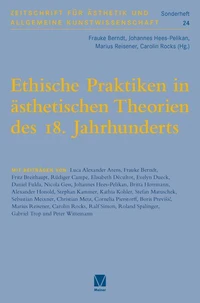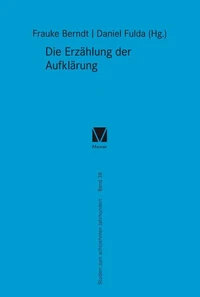Ambiguity in Contemporary Art and Theory
Par : ,Formats :
Disponible dans votre compte client Decitre ou Furet du Nord dès validation de votre commande. Le format PDF est :
- Compatible avec une lecture sur My Vivlio (smartphone, tablette, ordinateur)
- Compatible avec une lecture sur liseuses Vivlio
- Pour les liseuses autres que Vivlio, vous devez utiliser le logiciel Adobe Digital Edition. Non compatible avec la lecture sur les liseuses Kindle, Remarkable et Sony
 , qui est-ce ?
, qui est-ce ?Notre partenaire de plateforme de lecture numérique où vous retrouverez l'ensemble de vos ebooks gratuitement
Pour en savoir plus sur nos ebooks, consultez notre aide en ligne ici
- Nombre de pages220
- FormatPDF
- ISBN978-3-7873-3426-1
- EAN9783787334261
- Date de parution06/04/2018
- Protection num.Digital Watermarking
- Taille10 Mo
- Infos supplémentairespdf
- ÉditeurMeiner
Résumé
It has become commonplace to associate art and aesthetic experience with the category of ambiguity. Indeed, when we talk about art, we cannot do without the dynamic force of ambiguity just as the aesthetic itself cannot do without it. The great efforts to disambiguate aesthetic practices and their associated theories and contexts would eliminate art's unique ability to reshape our knowledge of the world, our sensory encounters with it, and our moral or political positions in it.
The essays collected in this volume present different perspectives on this central category and develop interdisciplinary connections.
Contributors include Frauke Berndt, Joy H. Calico, Stephan Kammer, Lutz Koepnick, Verena Krieger, Richard Langston, Rachel Mader, Lily Tonger-Erk, Gabriel Trop, and Thomas Wortmann.
Contributors include Frauke Berndt, Joy H. Calico, Stephan Kammer, Lutz Koepnick, Verena Krieger, Richard Langston, Rachel Mader, Lily Tonger-Erk, Gabriel Trop, and Thomas Wortmann.
It has become commonplace to associate art and aesthetic experience with the category of ambiguity. Indeed, when we talk about art, we cannot do without the dynamic force of ambiguity just as the aesthetic itself cannot do without it. The great efforts to disambiguate aesthetic practices and their associated theories and contexts would eliminate art's unique ability to reshape our knowledge of the world, our sensory encounters with it, and our moral or political positions in it.
The essays collected in this volume present different perspectives on this central category and develop interdisciplinary connections.
Contributors include Frauke Berndt, Joy H. Calico, Stephan Kammer, Lutz Koepnick, Verena Krieger, Richard Langston, Rachel Mader, Lily Tonger-Erk, Gabriel Trop, and Thomas Wortmann.
Contributors include Frauke Berndt, Joy H. Calico, Stephan Kammer, Lutz Koepnick, Verena Krieger, Richard Langston, Rachel Mader, Lily Tonger-Erk, Gabriel Trop, and Thomas Wortmann.




